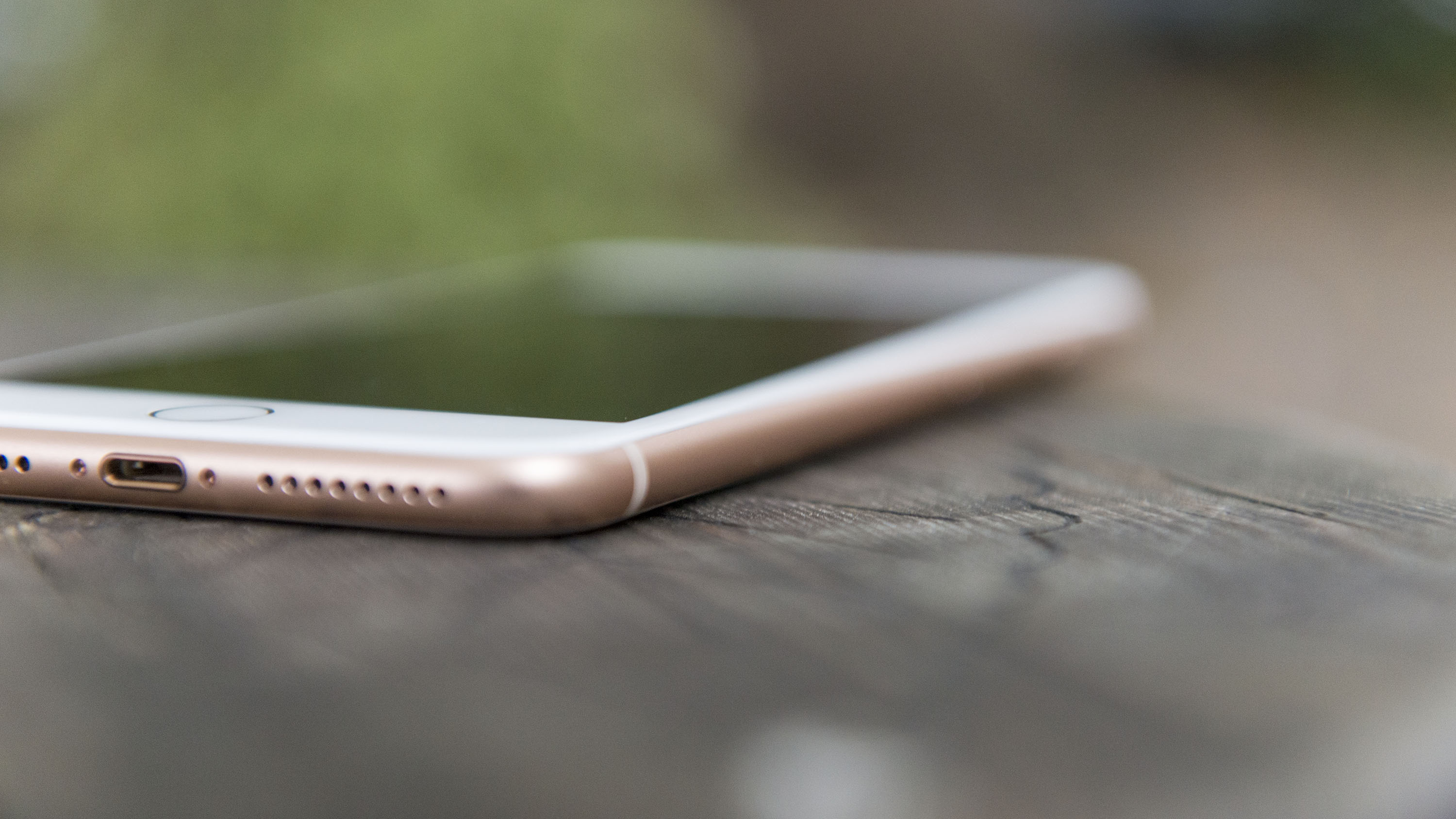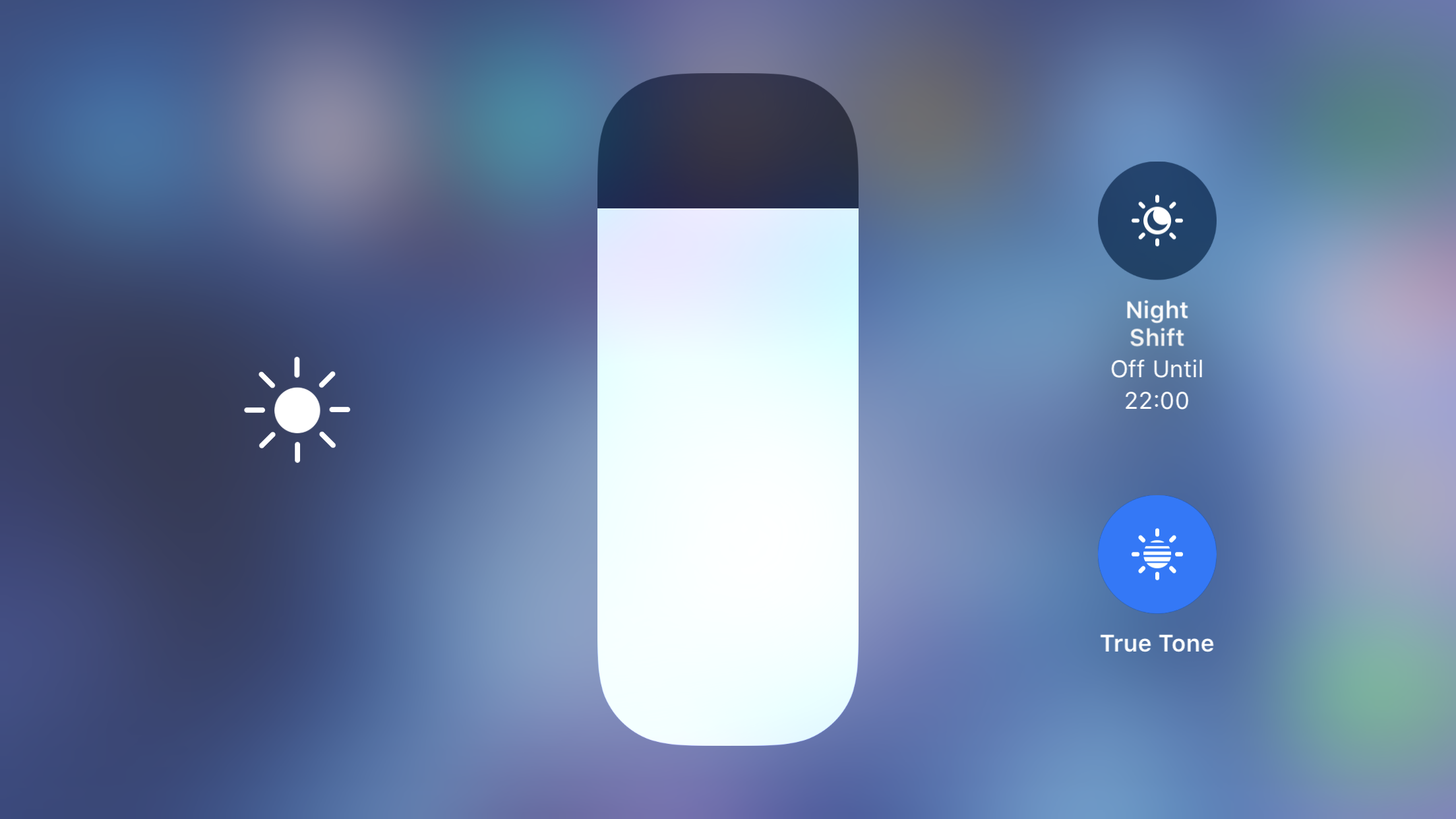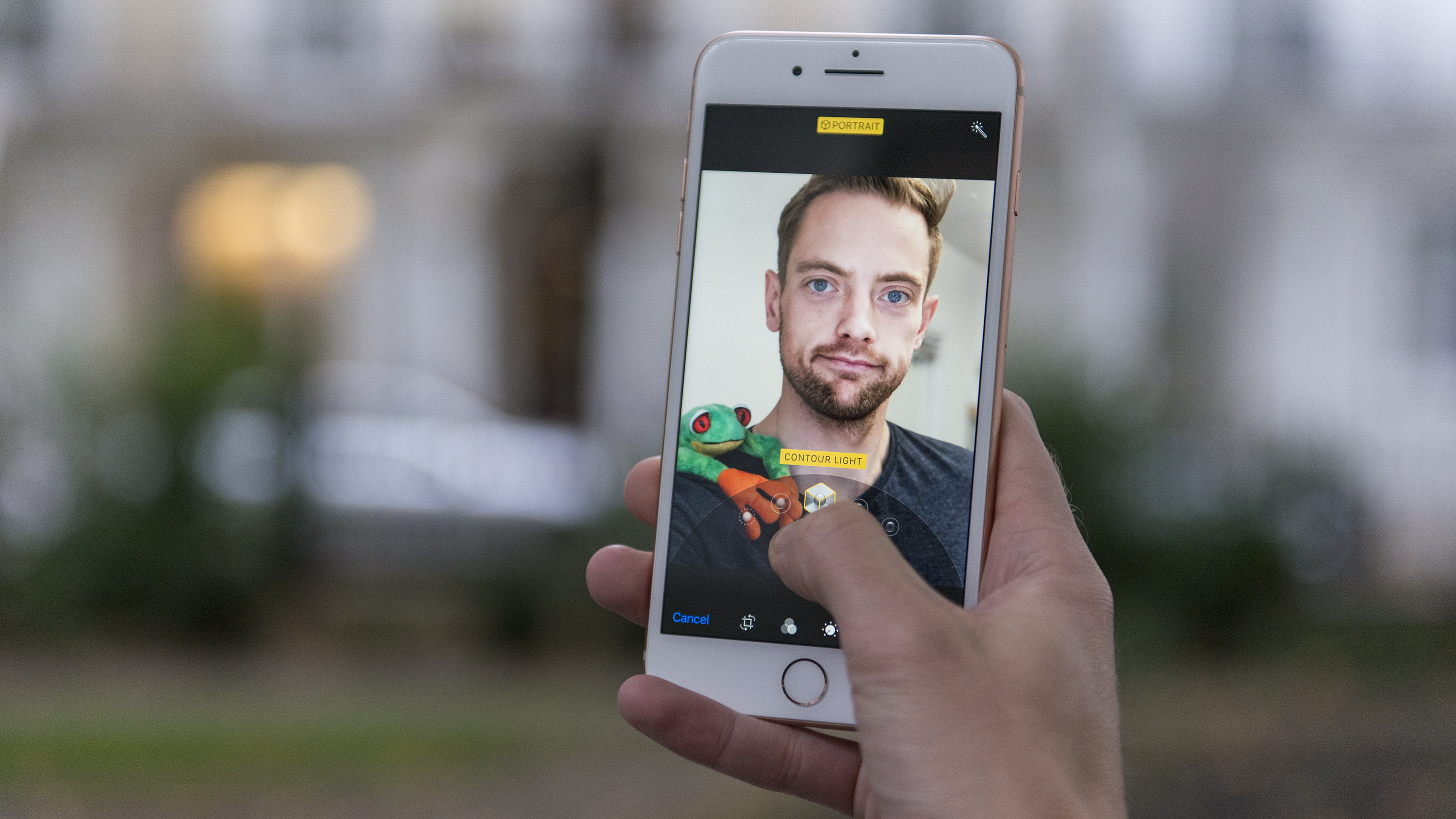Why you can trust TechRadar
True Tone screen and better speakers
- Improved color reproduction and temperature
- Speakers are noticeable louder
It would be wrong to look at the iPhone 8 Plus' screen, see a 5.5-inch Full HD display, and assume nothing changed from the year before. Our review digs deeper than the specs sheet.
In terms of size and resolution, that’s true, but it's missing a big point: the upgrades to the color reproduction and temperature.
These are things you won't really notice day to day, but move to an older iPhone model and you'll probably lament their loss.
While it’s not the sharpest screen on the market, the fact that the display feels so close to the glass really gives it some pop, and the colors are strong and vivid without being overpowering.
True Tone, technology taken from the iPad Pro, is definitely understated – you won’t notice it much, but it'll change the color temperature of the screen to match the ambient lighting better.

It's a symbol of the luxury you're getting when buying an iPhone; yes, it changes the color and a warmer iPhone screen in lamplight is nice, but it's not a reason to buy – it's just an enhancement to the whole experience.
It's a shame that the iPhone XS and XR phones exist, as they're got a more impressive screen than that on the iPhone 8 Plus, with more vivid colors and a deeper contrast ratio – but the way the iPhone 8 Plus offers more natural color reproduction is going to appeal to many.
At the time of launch, only the Samsung Galaxy S8 Plus or Note 8 could rival it for sheer technical ability and performance. A number of phones have since topped it, but for day to day use it's still brilliantly clear, bright and fun to look at.

In direct sunlight it's clear, watching videos is possible in nearly every situation, and the size is just about right – the large bezels around the display are the only downside compared to the bezel-less likes of the iPhone XS and Samsung Galaxy S10.
Mobile HDR is also supported on the iPhone 8 Plus, where it's not on the iPhone 7 Plus – the reason for the italics there is that it's not a Mobile HDR screen, but it can play back HDR content.
It's a shame, because Mobile HDR really does make a massive difference to shows, especially in the darker scenes. It's available on the higher-resolution iPhone X, iPhone XS and iPhone XS Max OLED screens, giving you another possible reason to pay for Apple's premium upgrades.

The dual speakers on the iPhone 8 Plus are also upgraded over the previous model – we've tested them on a decibel meter, and they are indeed louder.
Apple is claiming the new phone is 25% louder, and in our blind testing alongside the iPhone 7 Plus and Samsung Galaxy Note 8 the new version was clearly the loudest phone.
While the upgrade year-on-year isn't hugely marked, the quality of the speaker output is rich enough though, and the sound fills a wider space than the mono sound on the bottom of the Galaxy Note 8 – it's another refinement on the iPhone 8 Plus.
New AR effects
- AR implementation is cool but flawed
- AR works just as well on the iPhone 7 Plus

Augmented reality (AR) is a curious thing for Apple – there's a big move towards the tech, but it's hard to see why at this point, if you look at the apps and games available.
For instance, we played The Machines, a tower defense-style game where you have to strategically deploy forces to win battles, and in AR you'll need to move around the playing surface to play the game.
It's… fine. It reminds us a lot of when the first gyroscope games on the iPhone 4 appeared. It was cool that you could move the phone around and play first-person-shooter games, but it wasn't easier or more immersive than what was out there already.
The same with AR – it's cool to be able to move around the playing space, but it's quickly tiring. We can imagine playing in multiplayer it would be cool, with a large table playing space and someone else with a similar iPhone doing the same, but by yourself, it would just be easier to use the screen.
Also, the experience was the same on the iPhone 7 Plus as it was on the iPhone 8 Plus, so clearly the more powerful innards aren't that necessary to enable this capability. And of course it's on the newer iPhones too.
For Apple AR is clearly in its infancy. You wouldn’t buy an iPhone at the moment for its capabilities in this area, but it is something Apple wants to push to get developers thinking about what can be done.

Because imagine the same game of The Machines played with a pair of glasses instead, you and a chum moving around the table and playing the game in real time – that's the future Apple is reportedly envisioning.
If that's the case, AR now makes perfect sense – and you can expect more titles to appear this year that show off the technology's capabilities in niche ways.

Gareth has been part of the consumer technology world in a career spanning three decades. He started life as a staff writer on the fledgling TechRadar, and has grew with the site (primarily as phones, tablets and wearables editor) until becoming Global Editor in Chief in 2018. Gareth has written over 4,000 articles for TechRadar, has contributed expert insight to a number of other publications, chaired panels on zeitgeist technologies, presented at the Gadget Show Live as well as representing the brand on TV and radio for multiple channels including Sky, BBC, ITV and Al-Jazeera. Passionate about fitness, he can bore anyone rigid about stress management, sleep tracking, heart rate variance as well as bemoaning something about the latest iPhone, Galaxy or OLED TV.
